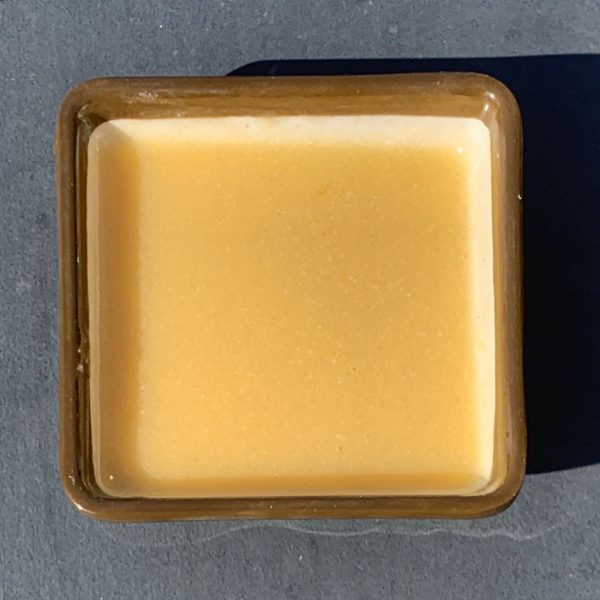Miso butter is a scrumptious sauce you can put to work in wonderfully easy ways

Looking for an easy way to make your home cooking meaningfully more interesting? Here’s a wonderful one—miso butter. Its roots are in Asian tradition; you can order it up every day of the week from Miss Kim’s kitchen, and it’s easy to put to work in yours. Miso butter sauce is a staff favorite and one of managing partner and chef Ji Hye Kim’s most compelling go-tos:
At Miss Kim, we use a variety of fermented sauces and pastes. They’re like magic potions packed with flavor, secret weapons for anyone who fancies themselves a good cook. We have what we call three Korean mother sauces: Korean soy sauce (ganjang), soy paste (doenjang), and chili paste (gochujang). Then we have fermented fish sauces: fermented anchovy sauce (myulchijut), fermented sand lance fish sauce (kanarijut), and fermented tiny whole shrimp (saewoojut). And last, but not least, we also have miso, the fermented Japanese soy paste.
Ji Hye’s not the only one who loves Miso. Sarah Jampel sang its praises in Bon Appétit 14 months before this pandemic set in: “Salty, earthy, and funky, miso is the fermented, versatile ingredient that we put in everything from pasta salad to apple pie.”
Ji Hye continues:
Have you seen the Netflix show and the cookbook by Samin Nosrat called Salt, Fat, Acid, Heat? Samin’s premise is that these four things—salt, fat, acid, and heat—are the element of good cooking. It’s a succinct and skillful way of looking at cooking. The fermented sauces (like fish sauces and soy pastes) are basically the element of salt. They bring deeper savoriness and complexity to each dish. The only thing is that for a novice, it may be slightly tricky to use as the saltiness and the flavor can be quite intense.
A good beginner sauce to bring “salt” would be miso. Here we use shiro miso, or white miso. It’s sort of a milder cousin of the robust and rustic Korean doenjang. Because it’s a bit less salty than doenjang and a bit rounder too, white miso is easier to play with and to incorporate into different dishes across cuisines, even in baking (think salty chocolate chip cookies or salty butterscotch bars).
Now, to be upfront about all this, I’m relatively new to cooking with miso. So if you’re like me, take note of what Ji Hye said: like a roux in Louisiana, the darker the miso, the bigger the flavor. Miso can move from white, to yellow, to red—all the way on to the biggest flavor, black miso. The lighter the miso, the less fermentation time, and a higher ratio of other grains like rice, barley, or soybeans. The white miso in the miso butter at Miss Kim is, as Ji Hye has said, is on the mellower end of the spectrum.
One great example of how we use it is our miso butter. Butter certainly does not have a very long tradition in Korea, only having been brought into the country mostly after the Korean War. But that doesn’t mean butter is not well embraced. People quickly found out that fermented soy sauces and pastes are delicious paired with butter. In fact, pairing a dairy product with a fermented sauce can be quite tasty.
One of my favorite childhood meals is soy butter rice with an egg on top. Korean teenagers often enjoy melted mozzarella on tteokbokki, made extra spicy with more gochujang and chili flakes. It was popularized in the U.S. by chef David Chang at his Momofuku restaurants. We pair the amazing local unsalted Calder Dairy butter with the white miso for its versatility and mildness, as well as for its lack of gluten.
Miso butter is great. (It is super easy to make—take 2 parts good unsalted butter and 1 part white miso, fold into each other until uniform in a mixing bowl at room temperature). It keeps well in the fridge. It’s amazing on most things, but especially on vegetables. So good, that we have it all year at Miss Kim to serve on seasonal vegetables—asparagus and soft egg during spring; zucchini and pepitas during summer; slender Asian eggplants during late summer; butternut squash with toasted nuts during winter. At home, I spoon it over hot rice or noodles with a good pinch of black pepper for a quick and easy meal, like a grown-up buttered noodles.

As per what Ji Hye has said above, miso—and miso butter—are, like a great olive oil, best when added at the end of the cooking (too much cooking will kill the microorganisms active in the fermentation that help make it so magical). In addition to all those great ideas she just gave you, you can put it on green beans, (corn when it comes in later this summer), potatoes. It would be good on that farina I wrote about last week. Terrific melted over just-cooked fish. You could put it on toast, and then pile on a good bit of sautéed fresh spinach or zucchini. Ji Hye adds:
With our dining room closed and everyone spending more time at home, we’ve made some of our prepared sauces available for purchase and the fermented sauces make a prominent appearance. Along with the tteokbokki sauce (made with gochujang and used for our popular Street Style Tteokbokki and all our Bibimbob) and the galbi marinade (made with our house soy sauce, a wonderful marinade for meat, firm tofu, and vegetables), miso butter is on the menu and definitely one you should try. Go get it!
Order Miso Butter for curbside pick up at Miss Kim
Get Miss Kim’s recipe for miso butter and squash
|
Zingerman’s Art for Sale